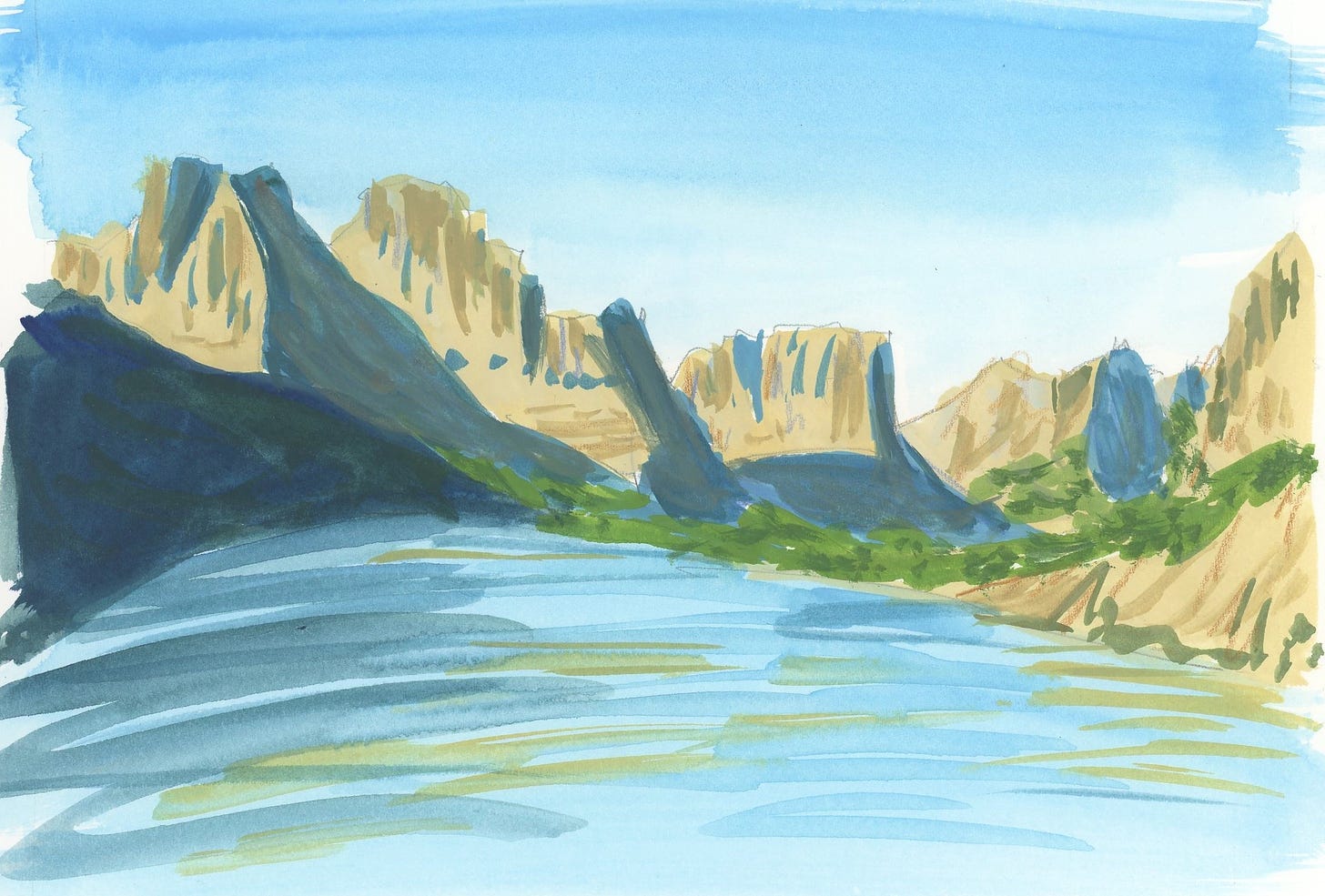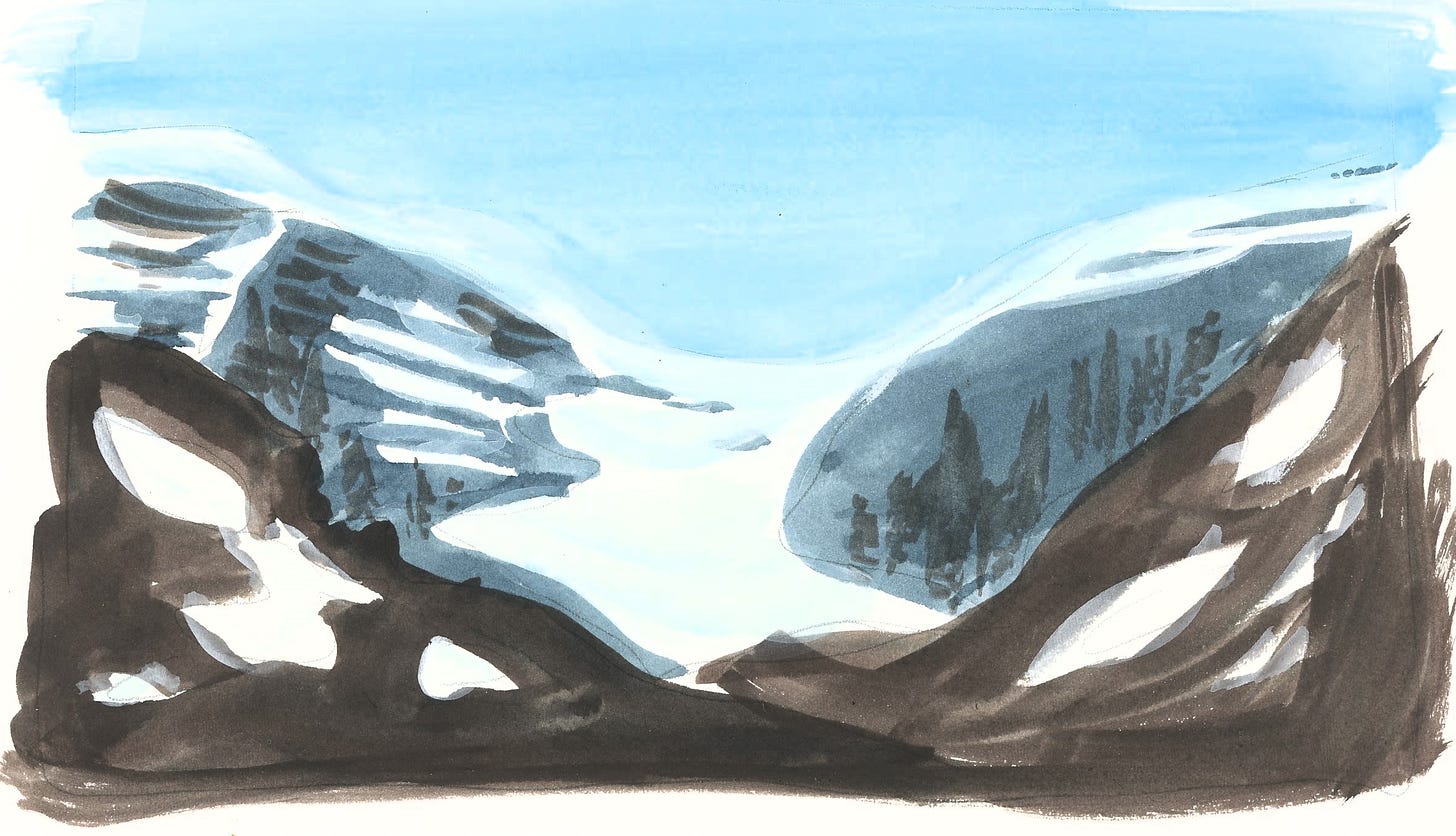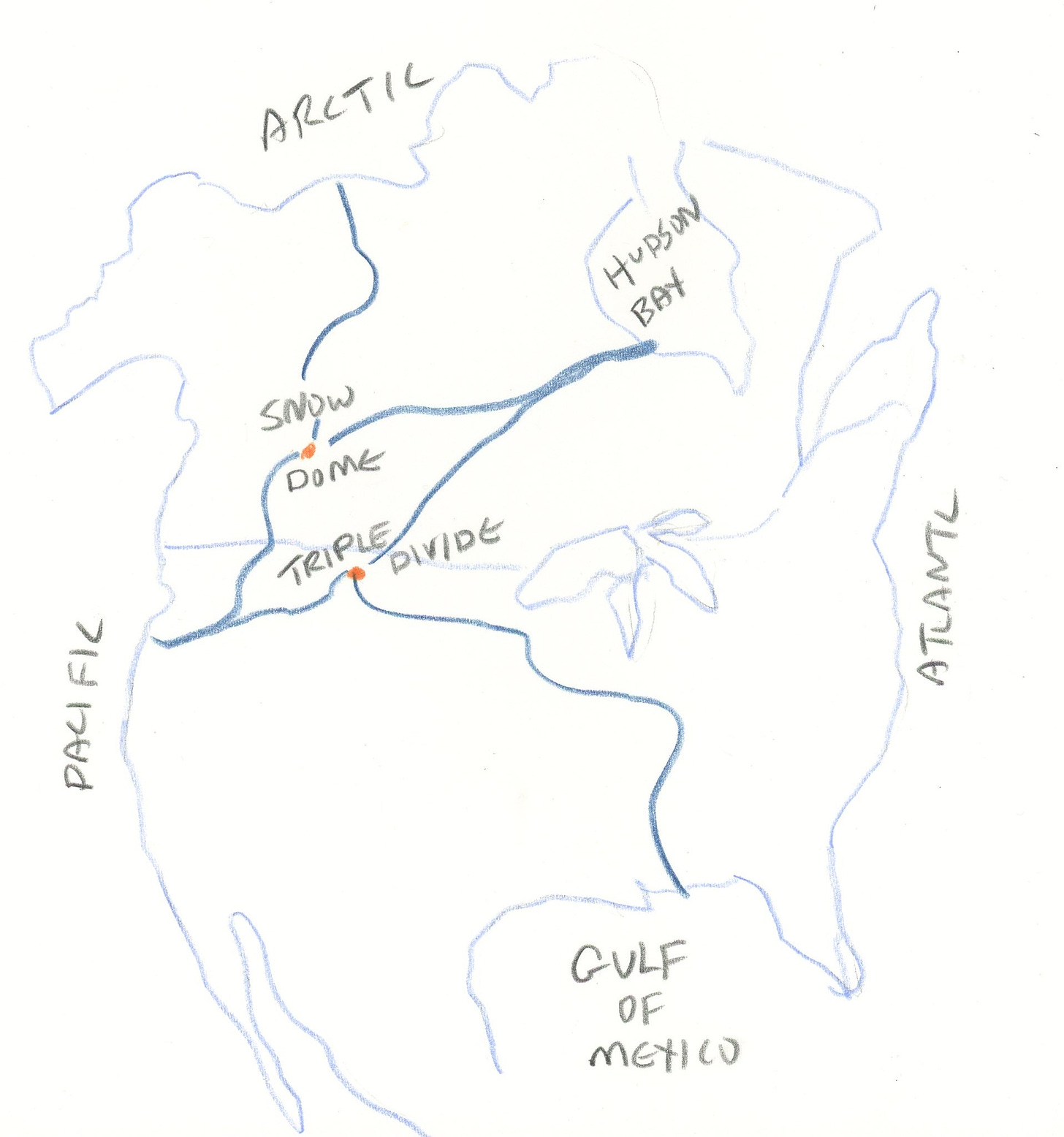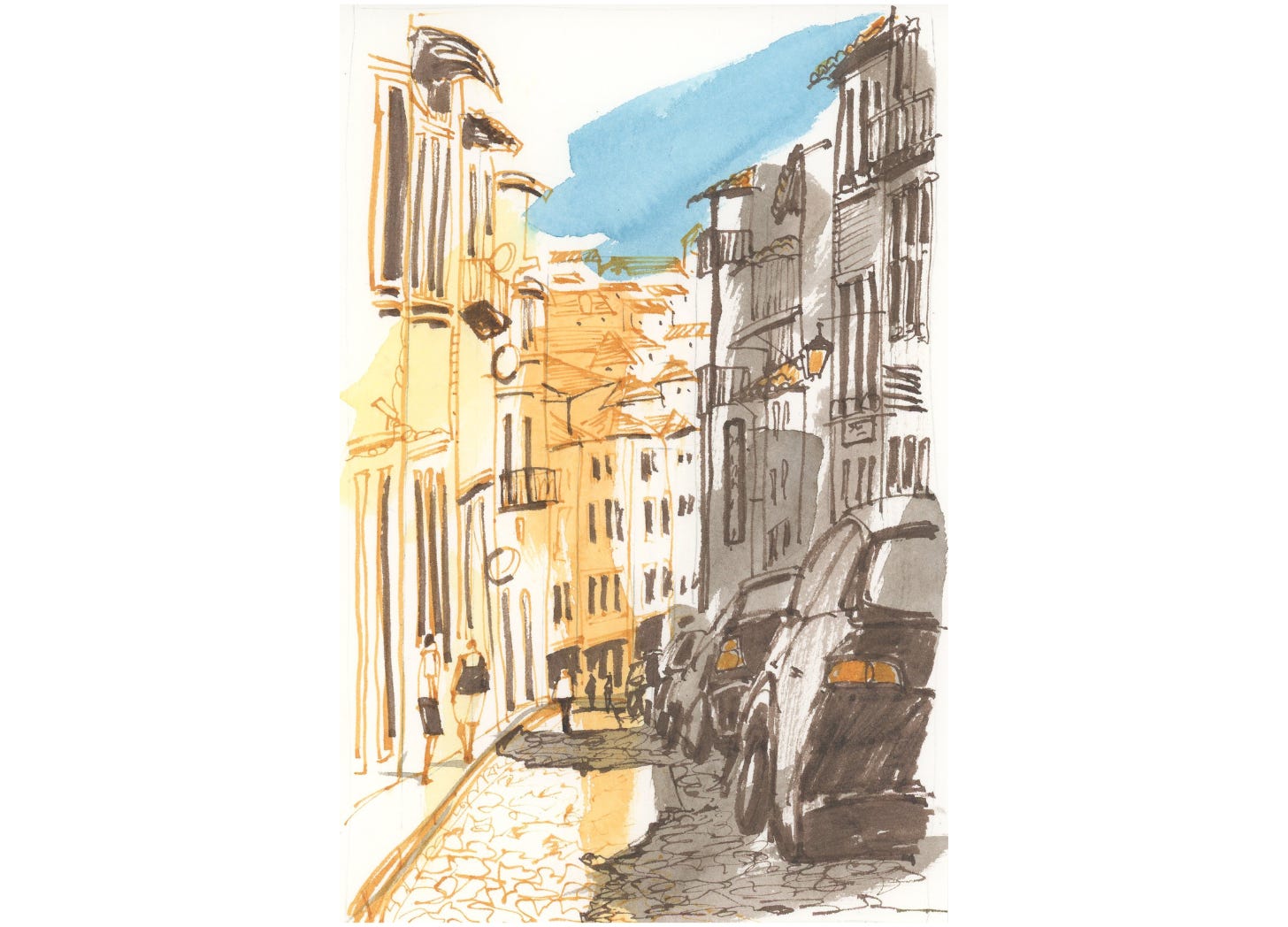In 1918, the superintendent of Glacier National Park, W.W. Payne, wrote a report for the Department of Interior in which he acknowledged that while Mt. Cleveland might be the highest mountain in the park, the most wonderful mountain was Triple Divide Peak.
I like Mr. Payne right away for his use of the scientific term “wonderful” to characterize this mountain.
What makes it wonderful is that rainfall landing on this peak feeds streams that travel to three far-flung bodies of water: The Pacific Ocean (via the Columbia River), the Gulf of Mexico (via the Mississippi), and Hudson Bay (via the Nelson River).
Remarkable, right? Anytime water drains into three separate basins, it’s called a “triple divide,” and there are many of them around the world. (More on that in a minute.) But what Mr. Payne didn’t realize is that we would inevitably decide that a triple divide isn’t enough.
When waters flow into three different oceans, that’s called a hydrological apex—and it’s extremely rare. In fact, there’s only one in the world: Snow Dome, in Canada, on the border between British Columbia and Alberta. Snow Dome feeds into the Pacific Ocean (also via the Columbia, that’s a busy river), the Arctic Ocean, and the Atlantic Ocean, via Hudson Bay (also through the Nelson River).
There’s only one problem with Canada’s claim on the world’s only true hydrological apex: It’s in Canada. This is very unsatisfying to Canada’s bombastic neighbors to the south.
To remedy this obvious mischaracterization of Canada as a place where anything singular and extraordinary could happen, a number of journalists, geologists, and civic boosters here in the United States got to work to upgrade Triple Divide Peak from a merely wonderful triple divide to a truly astonishing hydrological apex—by deciding that Hudson Bay counted as both an outlet to the Atlantic and to the Arctic Ocean.
That way, Canada could keep its title—for now, until we can find a way to characterize the Hudson Bay as sitting entirely within the Arctic Ocean—while not depriving the United States of its own Biggest, Best, and Most Amazing Thing.
And while the exact boundaries of oceans are surprisingly ill-defined, a bit of the Arctic Ocean is, in fact, inside Hudson Bay. The trouble is with this one preposition, into. Does water actually flow from Hudson Bay into the Arctic? Because water from the Arctic seems to flow into Hudson Bay, and then out to the Atlantic. So how could water from Triple Divide Peak actually flow into the Arctic?
Most Americans, presented with this question, would tell you that there’s no point in muddying the waters (sorry) with points of grammar and science. Just accept that we have one too, of course we do, and move on.
So where else can one find a triple divide, even if it isn’t a hydrological apex?
There’s one in Switzerland, Lunghin Pass, which feeds the North Sea, the Black Sea, and the Mediterranean Sea.
The aptly-named Three Waters Mountain in Wyoming sends water into the Sea of Cortez, the Pacific Ocean, and the Gulf of Mexico.
Mitchell Junction in Australia flows into the Pacific Ocean, the Indian Ocean, and the Gulf of Carpentaria.
A spot near the tiny ancient village of Récourt in France, very near the village of Langres where I went to research one of my novels, feeds the North Sea, the English Channel, and the Mediterranean Sea.
There are other triple divides out there—perhaps you’ve been to one, and you’ll tell us about it in the comments. Just don’t go adding another hydrological apex to the list, unless, of course, it is in the United States, so that we could claim to have the MOST hydrological apexes of any nation in the world.
Please join me in Cannon Beach!
This year I’ll be at Get Lit at the Beach for the second time, and I can tell you that it’s a literary festival like no other. First, you’re in Cannon Beach, a gorgeous seaside town here in Oregon. Second, you’ll get to enjoy unusually in-depth and intimate gatherings with the authors. It’s kind of like a weekend-long hangout, with receptions and dinners and casual chats. Third, the audience is also pretty cool. Last time I was there, I met people who had come to Get Lit every year since its inception. I met people who regularly travel from several states away just to come to this event. And I might even get a little sketching time in at the beach! Hope some of you can join us.
Here’s what paid subscribers have been up to
I filmed myself sketching (sort of) in San Francisco and walked through the process of this two-page spread from Coit tower.
I also made a second Porto painting for Katie, this time in two colors of ink and watercolor. This is what you get (or something like this) if you subscribe at the Patron of the Arts level, where I’ll paint your vacation photo and send it to you.
These subscriptions help keep the lights on around here and give you a whole archive of art lessons and demos. If you’re interested:
The Bit at the End
Come find me on Instagram, or see paintings for sale- Right here
Order signed copies of some of my books from my husband’s bookstore, or order my books and many books I love at Bookshop.org
Take one of my online writing or art classes here
Leave a comment! I love to hear from you!










Amy, you have outdone yourself! The triple divide story is truly "wonderful!"
Loved the overwhelmingly insecure tone throughout, very vulnerable writing.